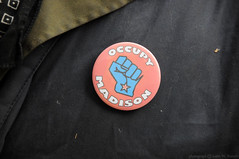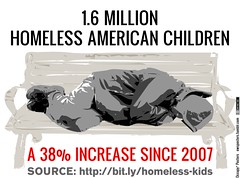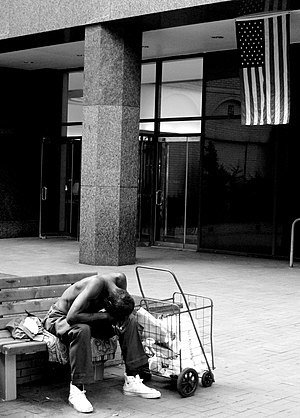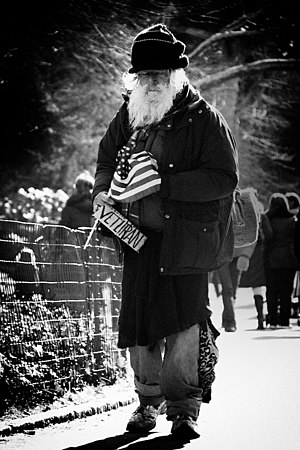In Madison, WI, where 3,000 people a year experience homelessness, Occupy Madison, aided by many groups and businesses, is building tiny, 98-square-foot homes with beds, microwaves, refrigerators, compost toilets, paintings and heating.
For the time being, the homes are being built on wheels, because the city’s current parking regulations forbid trailers from staying at the same location for more than 48 hours, so the houses will be moved every two days until the law is changed. Local churches are offering their parking lots for the new mini-residences, once zoning laws are amended. City Councilwoman Marsha Rummel plans to introduce legislation allowing houses of worship and non-profits to accommodate the homes on their property.
Occupy Madison plans eight more small homes in the next year, and—like other Occupy groups around the country—it wants to create a community for formerly homeless people.
The first home will go to Betty Ybarra and Chris Derrick, who have been homeless and living in a tent for 15 months. They are helping volunteers build the house.
Madison city housing is very expensive, so homeless people are forced into shelters, but once a person’s time runs out at a shelter they return to the streets, where they are subject to police fines.
Project organizer Bruce Wallbaum says:
We are providing a small but a very adequate home. People are fearful of homeless people living in tents, and I think that a house sort of takes away that fear. We anticipate we may have to move two or three homes before either land or the church option becomes available.
“In order to live in one of the new little homes, a homeless person goes through an application process, has to start working in the Occupy Madison Build [OM Build] shop, where they are required to help build the home, and they eventually reach a point where they’re in line to get a tiny home.
Occupy Madison plans to ultimately create an eco-community, with homes in a variety of sizes, including one-bedroom. The first homes weigh about 500 pounds each and cost about $4,000 to make. Donations made to Occupy Madison and Occupy Madison Build will cover rent, utilities and the supplies needed to construct the homes.
While most of the funding for the homes has come from philanthropic donations, the University of Wisconsin–Madison’s engineering department donated a solar electric system for each home, the local fire department gave smoke alarms and a local artist has offered to create unique pieces of art for each home. Donations of scrap wood were so plentiful that the group had to discourage them. It hosted a Pallet Palooza, where volunteers broke down the shipping platforms that are the preferred source of wood siding for the houses.
Word of the tiny homes is spreading fast. After news of homeless people working on the first 98-square-foot house broke in early July, the initiative got its share of attention from local media, WMTV-15, Al Jazeera America and Minneapolis’s MintPress News, which sent the story viral. Several Occupy groups from around the U.S. have contacted Wallbaum to learn how his group runs the program.
About 150 people showed up at a July 30 fundraiser where OM Build raised $17,600. About 15 people have attended each of two workshops to learn a few basic skills needed to construct the houses in the step-by-step system developed at the group’s rented workshop. Already, OM Build fundraising has provided the seed money needed to operate the plan for six months and test its viability.
The concept was a huge hit with 30 leaders of local faith communities who visited the OM Build workshop. Barbara McKinney, associate director of Madison-area Urban Ministry, said:
We walked away feeling that this is a way to move toward addressing homelessness in our community. It’s a proactive, workable solution. The next step is for leaders of individual congregations to bring information about OM Build to their members, with an eye to some eventually hosting a house, if laws are changed to make that possible.




























 Over half of Detroit’s homeless are at risk of dying on the streets from freezing cold or violence—a far greater percentage than in any other US city. Interviews conducted via
Over half of Detroit’s homeless are at risk of dying on the streets from freezing cold or violence—a far greater percentage than in any other US city. Interviews conducted via 

































